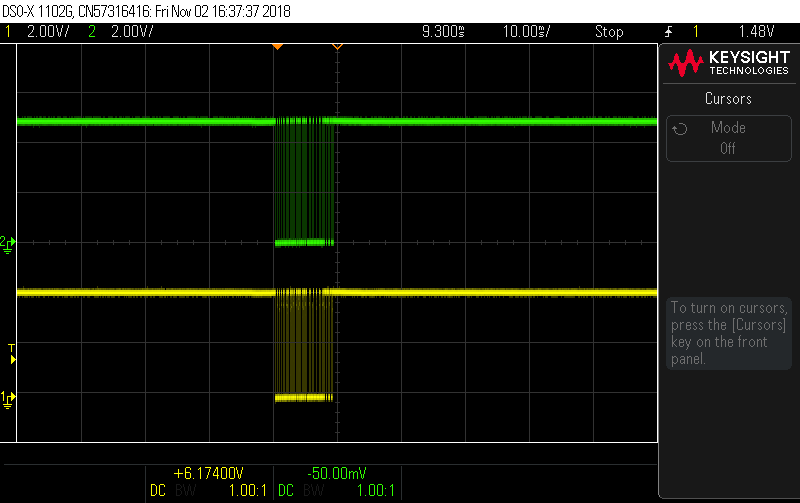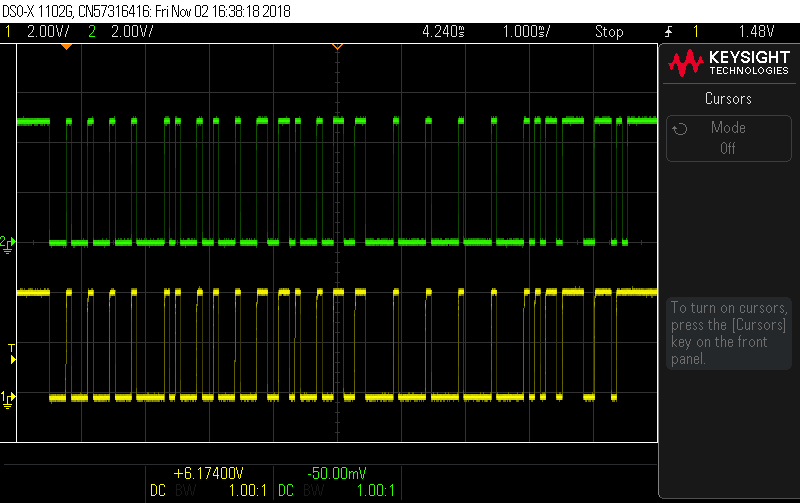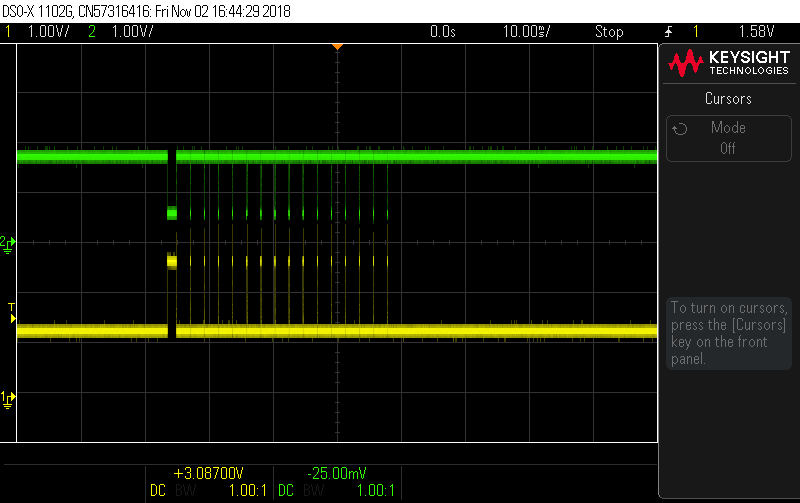I have two SN65HVD230 devices on my board connected with wire loop about 30cm.
These devices sometimes work, sometimes not, transmiting is working, but RX is empty
What can cause this issue ?
Here is my deign:
Here is my oscilograms, probe is connected beetween:
1. TX on U3(yellow) and on RX on U1(green)
2. TX on U3(yellow) and CANH on U1(green)
3. CANL(yellow) and CANH(green)
When device is working correctly.
and when device is not working: no RX signal on U1(green), but the others signals are correct.


















